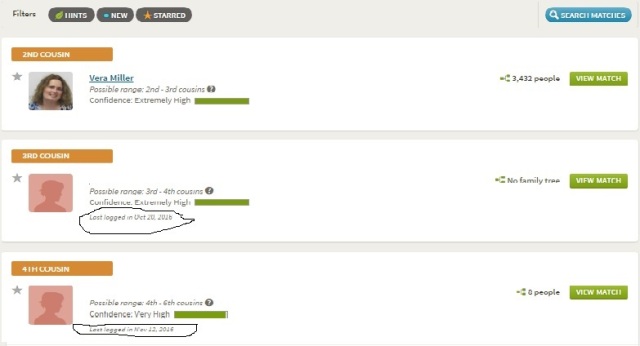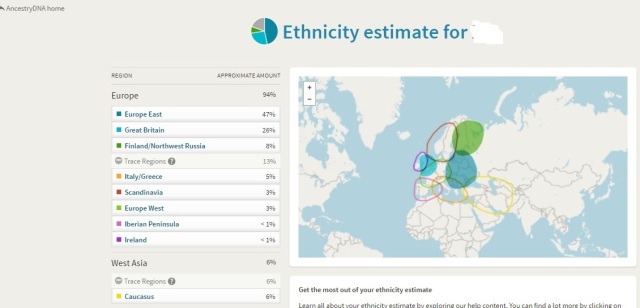The new lifestyle of staying at home as much as possible is perfect for taking a second look at DNA matches. My DNA journey started almost 10 years ago and thankfully, so many close relatives and cousins have agreed to test.
This gives a great opportunity to share information from my DNA matches on Family Tree DNA that could help others figure out those not so strong matches.
Father’s mother’s family
My cousin Sveta’s family in Moscow has gotten into DNA by testing several relatives, helping give insight for DNA matching. She is my third cousin, whose great-grandfather was brother to my great-grandfather.
My father’s first cousin Eugenia, myself and I match to her. As you can see in the first image, I am the strongest match to her at 94 cms (total DNA strands). My son only matches her at 79 cms.
Eugenia is a weaker match to my third cousin, whose great-grandfather was brother to Eugenia’s grandfather. She only shares 58 cms with Sveta.
Ten relatives of Sveta’s family have tested on Family Tree DNA. Eugenia matches closer with Sveta’s sister, 75 cms. Then, a little closer with Sveta’s two first cousins, 81 cms and 83 cms.
Children of Sveta’s first cousins also tested. Eugenia matches 65 cms and 31 cms with two of Sveta’s first cousin’s children.
When the DNA matching was moved up to Sveta’s mother, granddaughter of my great-grandfather’s brother, the shared DNA became interesting.
I matched the mother at 116 cms, Eugenia matched her at 124 cms and my son at 103 cms. The amount of DNA I shared with Sveta’s mother was about the same as Eugenia even though we are a generation apart.
Mother’s father’s family
Now, we move onto my second cousin, Tatiana, from my grandfather’s family in Kyiv, Ukraine. Our grandparents were siblings.
My mother is her strongest match at 442 cms. Her youngest sibling is pretty close at 426 cms. The family’s middle child is sharing DNA at 376 cms.
My shared DNA with Tatiana is close to my uncle at 300 cms but my son’s match to Tatiana drops much lower to 95 cms.
Mother’s mother’s family
On to my grandmother’s family through her niece, my first cousin once removed, Irina, in Smolensk, Russia. Her niece’s grandmother’s is my great-grandmother.
My aunt shares the most DNA with Irina at 921 cms. My mom only shares 796 cms with Irina. The family’s middle child is in the middle at 909 cms.
My shared DNA is 309 cms. (Yes, I made myself a twin on Family DNA. Read about why in the linked post below.) The shared DNA between my son and Irina is 113 cms.
Hopefully, sharing this information has reinforced the importance of seeing the value of the weaker DNA matches. Thorough family tree research on siblings of direct ancestors makes the biggest difference for DNA testing.
Have some DNA success stories? Post your comments below.
This Fall: Effective communication with Russian and Ukrainian DNA matches. Follow this blog with the top right button to catch that post.
Related posts:
DNA testing finally proves its value in finding 16th century documents
Interesting results with making myself a twin on Family Tree DNA
Three siblings go on a DNA test journey
A Russian-American’s insider view of the 23andme Autosomal Test
A Russian-American’s inside view of the new AncestryDNA test
A Russian-American’s insider view of the MyHeritage DNA test
A Russian-American’s insider view of the Family Tree DNA’s Family Finder Test









